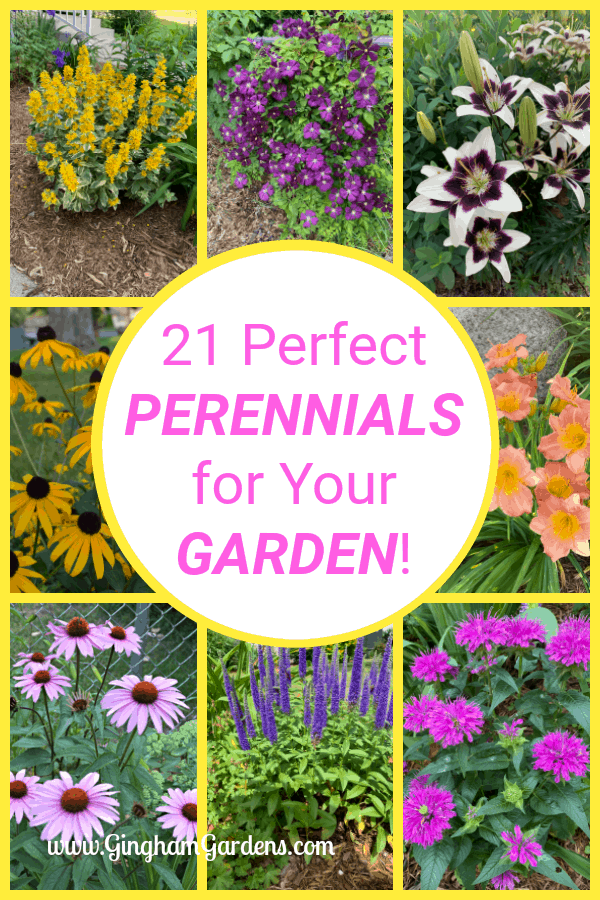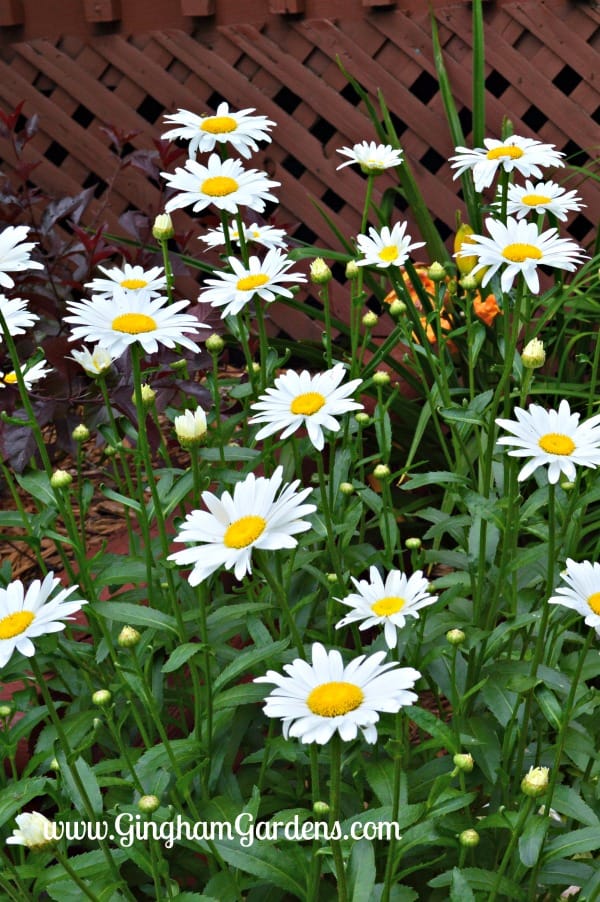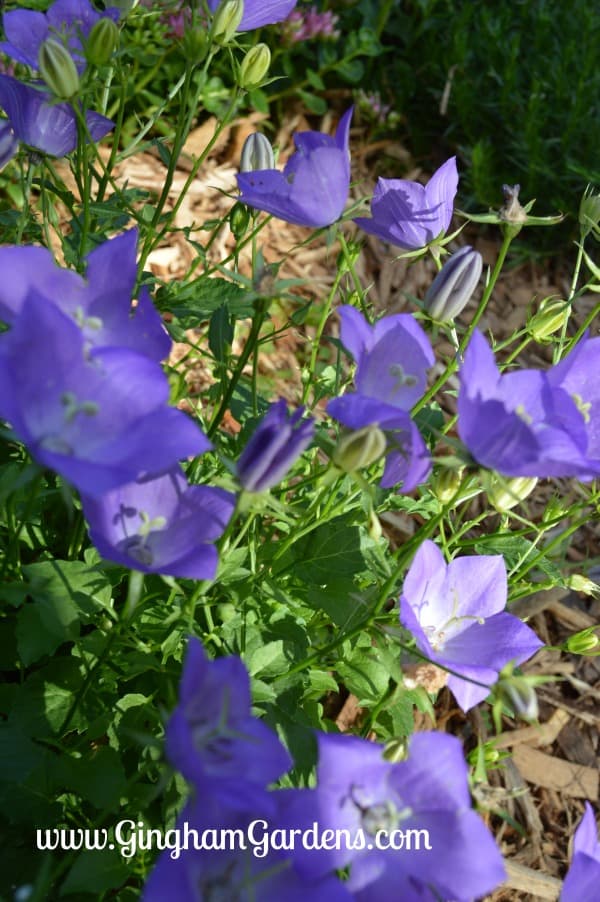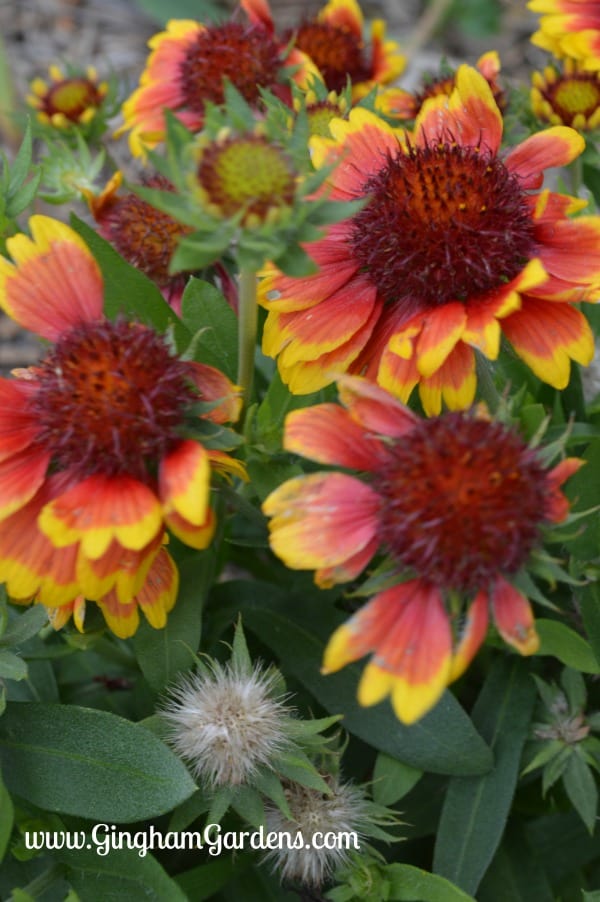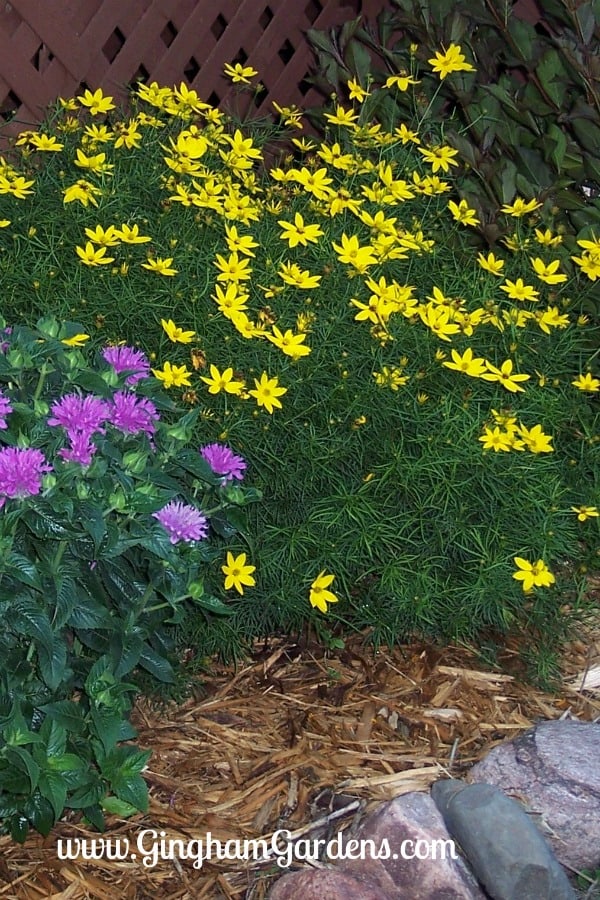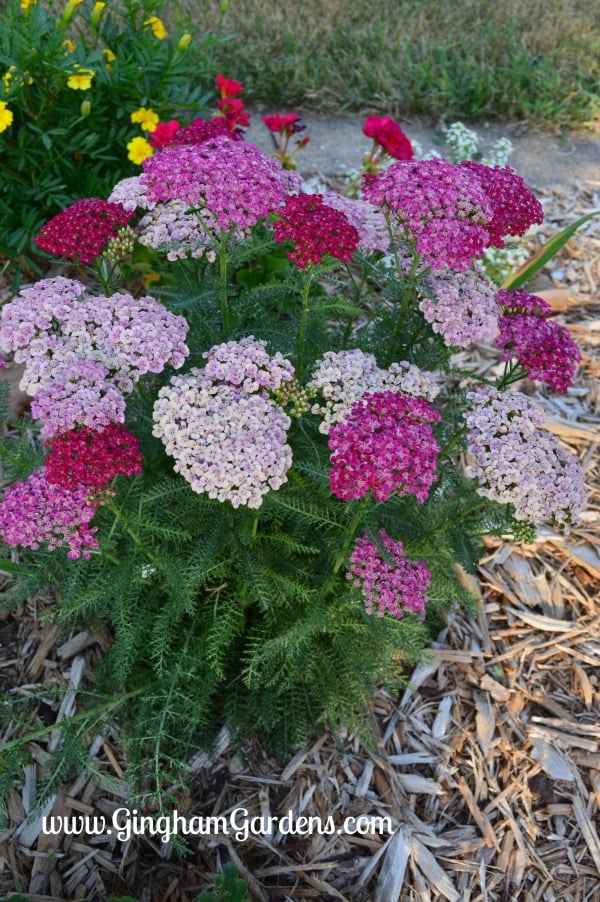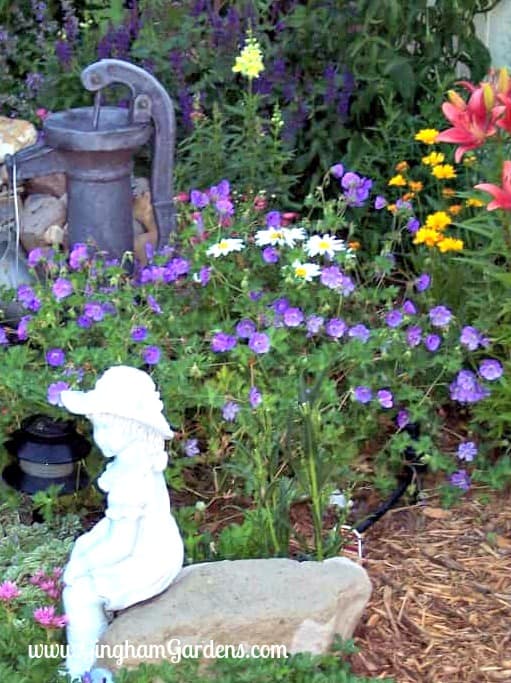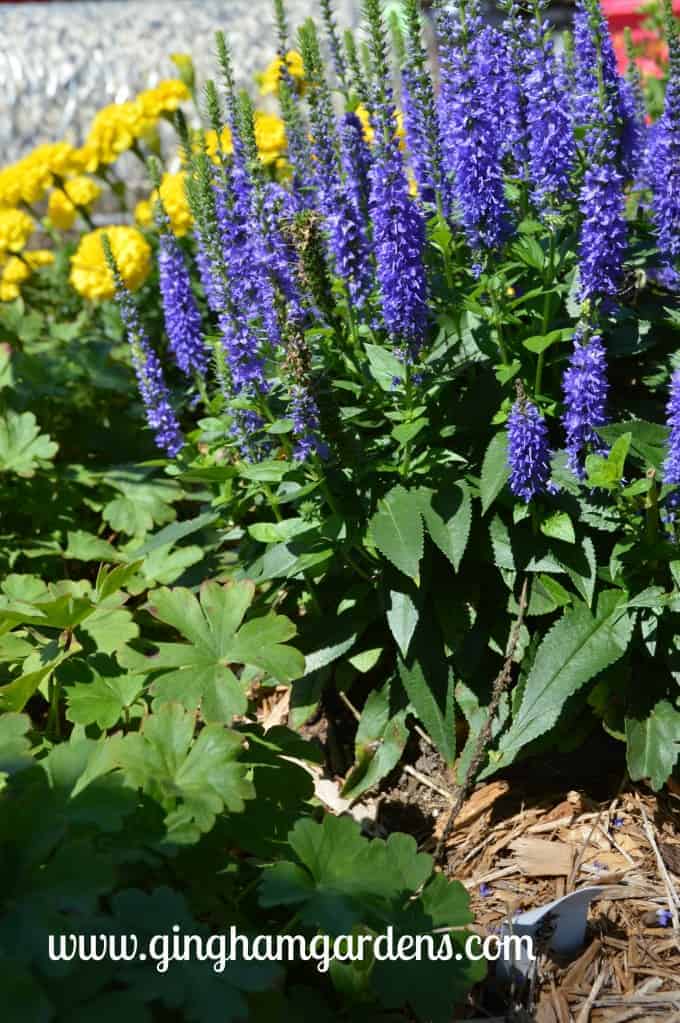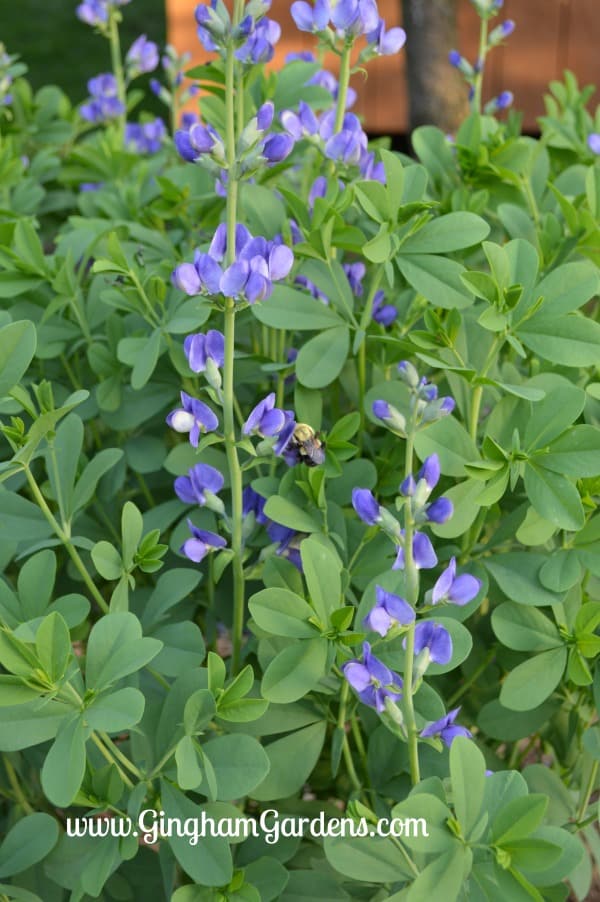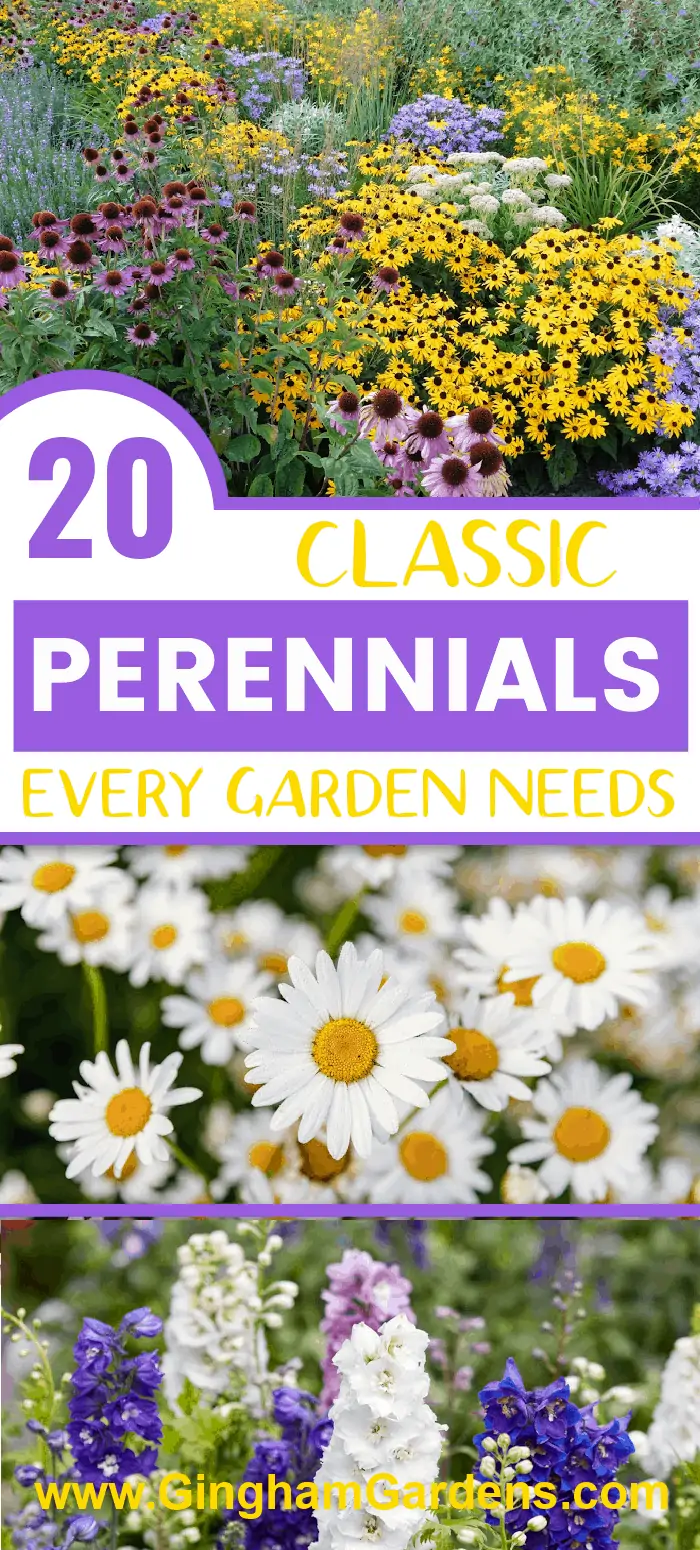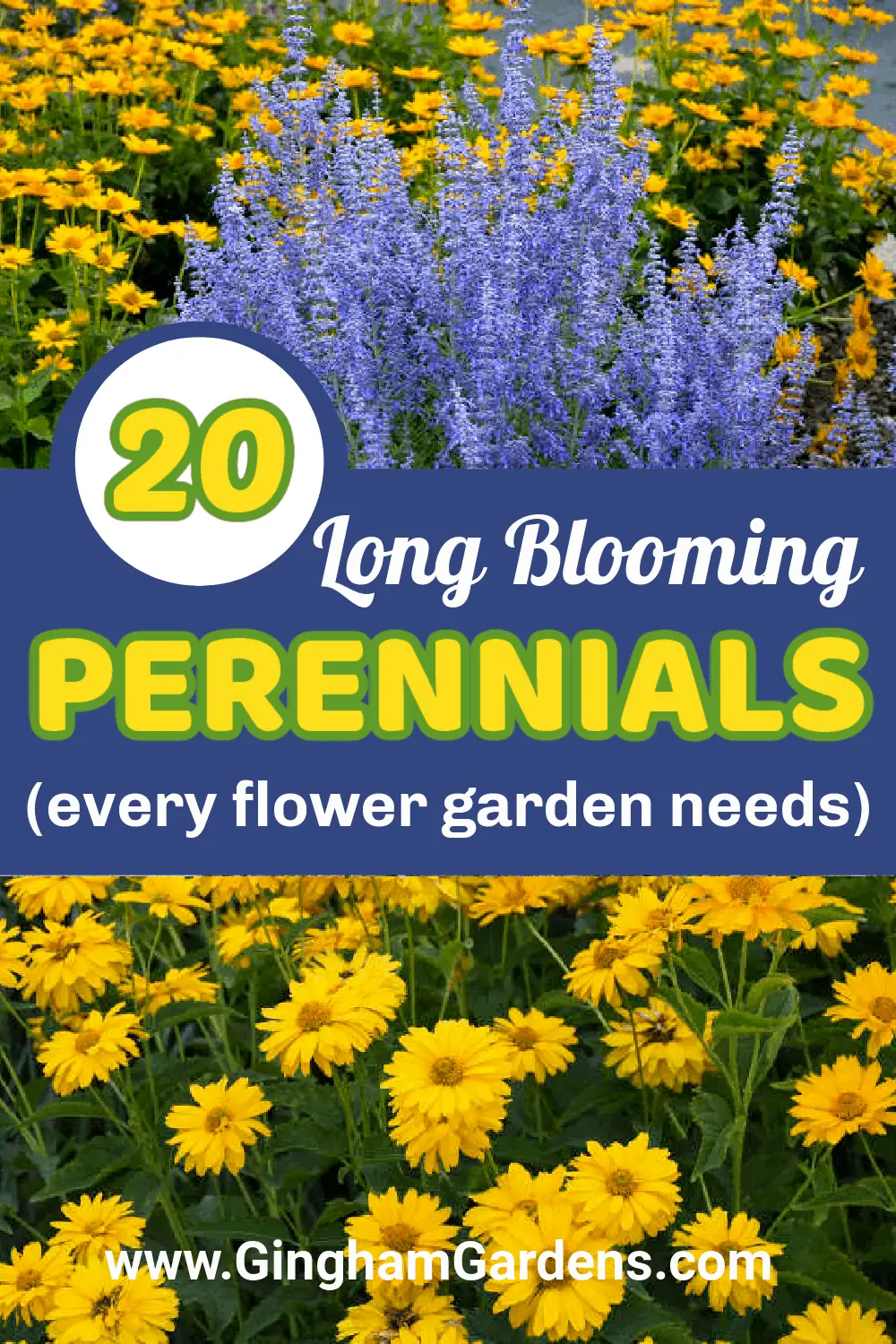Classic Perennials (That Every Flower Garden Needs)
I love flowers and since you’re here, I’m betting you do too. Perennials are the backbone of most flower gardens. A perennial is a plant that lives more than two years. Some are short-lived, meaning they only stick around for 2 or 3 years, but my favorite, Classic Perennials are those you plant once and they just get bigger and better every year.
There are hundreds and hundreds of perennials of different shapes, sizes, colors, sun requirements and different growing zones. In this post, I’m sharing Classic Perennials for sun that I have grown in my gardens over the years. If you need perennials for shade, I will share a link at the end of the post.
The Difference Between Perennials, Biennials and Annuals
First let’s get a few elementary facts out of the way.
Again, Perennials live longer than 2 years.
Biennials are a little trickier. A few good examples of biennials are foxglove and hollyhock. Let’s say you see a gorgeous foxglove at your local garden center that is blooming and you just have to have it. So you bring it home and plant it, you’re diligent about deadheading, and enjoy the blooms all summer. The following spring, you eagerly await it’s appearance and nothing comes up, nada, zilch.
Remember this, if you purchase a blooming biennial plant, it is a second year plant. If you purchase a starter biennial plant with no blooms, chances are it is a first year plant and if it survives winter in your zone, it will make it’s appearance in your garden and bloom the second year. Just to make it even more tricky, biennials will produce seed their second year and you may get some plants from seed the third year. I hope that makes sense and I don’t have you completely confused.
Annuals are planted every year and generally live only one season. If you’re lucky, many annual flowers will go to seed and come up again the following year.
This post contains affiliate links. If you click on
one of the links and make a purchase,
I may receive a small commission at no additional cost to you.
See full disclosure here.
Hardiness Zones for Perennials
Hardiness zones means a certain geographic region and the climate conditions for that area. If you don’t know what your hardiness zone is, you can check by clicking on this link. I have added the hardiness zones to the perennials listed in this post, but please note different species or varieties of the same perennial can be hardy in different zones. For instance, there are varieties of delphinium that are only hardy to down to zone 4, but other varieties of delphinium that are hardy to zone 3. It’s always a good idea to check the tag of a perennial you want to purchase. You can find your hardiness zone here.
What Determines a Classic Perennial or the Best Perennials
The Classic Perennials that made the list in this post:
- are super easy to grow,
- have a bloom time of 4 weeks or longer,
- they reliably come back every year,
- they are relatively easy to find at a local garden center,
- are fairly low maintenance, and
- aren’t vigorous spreaders or can be easily managed.
These classic perennials are so awesome because they just get bigger and better every year. Plus, if you don’t like where you planted a perennial, in most instances, you can move it. If you really love a certain perennial, once it’s established, you can divide it and spread the beauty all around your garden.
Need a Reminder of this Post for Later Reference?
Just pin to one of your gardening boards on Pinterest.
There are more pins to share at the bottom of the post.
The Best Perennial Flowers Every Garden Needs
Shasta Daisies (Leucanthemum) are most definitely classic flowers. What’s not to love about Shasta Daisies. There are many, many varieties of Shasta Daisies and the variety in the picture is Becky. Hardiness Zones 4 – 9.
If you need a low growing or short perennial, check out Blue Clips Bellflower (Campanula). This is not the weedy bellflower, Blue Clips stays put and the clump just gets bigger each year. Blue Clips also have a very long bloom time. White Clips, Birch Hybrid and Blue Uniform are also tidy, short, long blooming varieties of campanula. Hardiness Zones 4-9.
Introducing – Designing with Perennials for 3 Seasons of Blooms
flowers blooming from early spring right through fall?
Designing with Perennials for 3 Seasons of Blooms is a Workbook/Guide
to help you create a perennial flower garden that has a succession of
continuous blooms from early spring through fall.
The Guide walks you through each step from designing your dream
3-season perennial garden on paper to executing your plan in the garden.
The Plant Lists in the Guide include over 90 Perennial Flowers
categorized by bloom time, sun requirements, zone, deer resistant,
rabbit resistant, cutting flowers and pollinator friendly.
The Guide is very reasonably priced, so stop by and get your copy soon.
Many varieties of Catmint (Nepeta) are very long blooming perennials. I like to shear mine back to about six to ten inches a couple of times during the summer to get beautiful robust rebloom within about a week to ten days. Bees love catmint too. Pictured below is a stunning perennial combination of Walker’s Low Catmint, along with Shasta Daisies and Asiatic Lilies. Hardiness Zones 3-9.
Blanket Flower (Gaillardia) is a fun flower is sunny colors and blooms the entire summer into fall. I even like the fuzzy ball seed heads it makes. Hardiness Zones 3-9.
Tickseed (Coreopsis) is another great flowering perennial that blooms the entire summer. The best performing variety in my Zone 4b gardens is Zagreb. I’ve grown many varieties, but Zagreb seems to be the most reliable year after year. Hardiness Zones 4-9.
Balloon Flower (Platycodon) is a very charming perennial that every gardener should have the pleasure of growing. It’s super easy to grow and once it starts flowering, if deadheaded regularly, it just keeps putting out little balloons that burst into flowers all summer long.
Balloon Flowers are very slow to emerge in spring, so it’s important to mark where they are planted. Balloon Flowers also do not like to be moved, so be sure to plant them where they can stay. Hardiness Zones 3-8.
Yarrow (Achillea) comes in a ton of varieties. This beauty is Saucy Seduction and yes, all those different shades of pink are one plant. This baby just keeps putting out blooms all summer and into fall, plus the foliage is lovely too. Hardiness Zones 3-9.
Many varieties of Cranesbill (Geranium) bloom all summer. My favorites are Rozanne and Jolly Bee, which is pictured below. Hardiness Zones 4-8.
Some gardeners shy away from Yellow Loosestrife (Lysiamachia Punctata) thinking that it is invasive like it’s terrible cousin (gooseneck loosestrife). This Alexander variety is one of my favorite early blooming perennials. The variegated foliage looks amazing all summer even when the plant has finished blooming. Hardiness Zones 4-8.
A perennial garden isn’t complete without Tall Garden Phlox. Phlox comes in a variety of colors and most varieties have a light, sweet fragrance. Look for varieties that are mildew or fungus resistant. Hardiness Zones 4-8.
Black-eyed Susan (Rudbeckia) is an old-fashion perennial garden classic and would probably win the vote for cheeriest flower. Hardiness Zones 3-9.
If you don’t have at least a few Daylilies (Hemerocallis) in your Perennial Garden, just add some. I’m not talking about ditch lilies (my sympathies if you have those). There are so many amazing varieties of daylilies that are much more deserving of your garden space. Pictured below is cheery Happy Returns Daylily, a very long blooming daylily. Check out lots more pictures and Tips for Growing Daylilies. Hardiness Zones 3-9.
Speedwell (Veronica) is an underused perennial and I’m not sure why. It blooms pretty much nonstop throughout the growing season especially if deadheaded. Its gorgeous and bees love it. Hardiness Zones 3-9.
As far as I’m concerned, a Perennial Flower Bed can never have too many Lilies. Okay, Lilies blooming four weeks is stretching it, but if you plant different varieties you can definitely get more that four weeks bloom time out of lilies. If you’d like some tips for growing Lilies, stop over and check out How to Grow and Care for Lilies. Hardiness Zones 3-8.
Coneflowers (Echinacea) are one of the easiest perennials to grow. They are another flower that bees and butterflies love. In my Zone 4b gardens they are a little late to emerge in spring, so I’m always sure to tag them. This little PowWow Coneflower is one of my favorites. For a list of flowers pollinators love, see How to Attract Pollinators to Your Garden. Hardiness Zones 3-9.
False Indigo (Baptisia) is an amazing perennial and another one that is underused in perennial gardens. Even if the bloom time is on the shorter side, the foliage on the plant is amazing and the dry seed pods make a little rattle sound when the wind blows. Baptisia plants do not like to be moved, because they have a very long tap root, and they get quite large, so be sure to plant them where they will live permanently. Hardiness Zones 3-9.
If you can work a Clematis into your perennial garden, definitely add one or two. Oh heck, add a bunch, cause they are gorgeous! This pretty lady’s name is Ramona. Unfortunately, she now belongs to the owner of our former home. Hardiness Zones 3-9.
Delphinium is one of those stunning, old-fashioned perennials. The stalks of Delphinium get very heavy, so they do need staking to avoid breakage on a windy day. Most Delphinium will bloom early in summer and then again at the end of summer. Hardiness Zones 3-7.
How to Extend the Bloom Time of Perennials
To get the biggest bang for your buck, most of the perennials listed here will bloom an extended period of time if they are deadheaded. To deadhead a plant simply means to cut off spent blooms. If you need tips for maintaining your gardens to keep them looking great, be sure to pop over and check out, Flower Garden Maintenance Tips.
One of the most challenging things to do when planning and planting a perennial bed, is to have three seasons of continuous blooms in your garden. To help you with this, I have put together an extensive Guide/Workbook, called Designing with Perennials for 3 Seasons of Blooms, to help you design a perennial garden that blooms from early spring through fall. You won’t want to miss this opportunity.
If you’re looking for ideas for Shade Garden Perennials, be sure to check out: Made in the Shade Gardens.
How to Get Free or Cheap Perennials
If your garden budget is running low or on empty, you can shop from your own gardens by dividing your existing perennials. This article, Tips for Transplanting Perennials, will tell you how to divide perennials too.
Let your friends and neighbors know you’re looking for perennials. Always be sure you know what you are getting. You don’t want to end up with any of these Perennials Not To Grow In Your Garden (Even If They Are Free).
Check Facebook for perennial exchange groups in your area. In case you’re in the Twin Cities, Minnesota, I belong to this group.
Check Craigslist for Local Garden Club, or local gardener’s plant sales.
What is your favorite, classic perennial? Is it one on my list, or another one? Please leave a comment and let me know. Also, if you have a question about this post, or a gardening question, I’d love to help, simply leave a comment and I’ll answer it.
Thanks a bunch for stopping by Gingham Gardens today. I hope you enjoyed your visit and will come back soon.
Happy gardening,
Joanna
A few of my favorite perennial gardening necessities and fun things:
p.s. Follow Gingham Gardens on Pinterest for lots of great gardening ideas and tons of gardener’s eye candy.
p.p.s. You can pin these pictures by hovering in the upper left-hand corner. Pin away!
Pins to Share:


